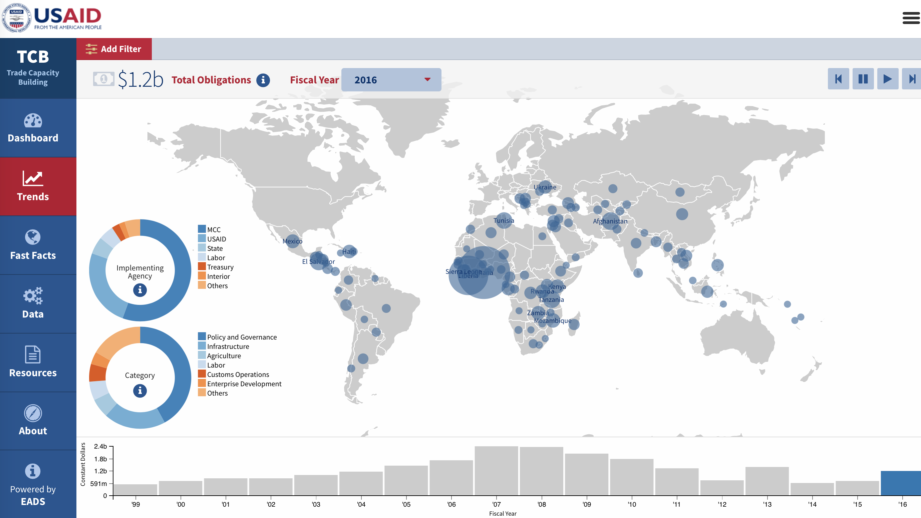Published 16 August 2018
Trade and trade agreements can play an important role in supporting economic development, but developing countries often face supply-side constraints or lack trade-related infrastructure, limiting their ability to engage in international trade.
Why do we offer trade capacity building?
Trade and trade agreements can play an important role in supporting economic development, but developing countries often face supply-side constraints or lack trade-related infrastructure, limiting their ability to engage in international trade. They might also need assistance in participating in trade negotiations or implementing their obligations under trade agreements.
The US Government supports Trade Capacity Building (TCB) activities delivered through international organizations like the World Trade Organization (WTO), but also provides TCB directly through programming by several different US Government agencies. One of the most important benefits of encouraging developing countries to participate in trade agreements is the reinforcement of best regulatory practices, good governance, transparency, and legal reforms that support democracy and open markets, outcomes that benefit the host country as well as American citizens and companies trading with and investing in those countries.
How does the US Government track TCB?
Because of the cross-cutting nature of TCB activities, many agencies are involved in managing programs and delivering assistance. The U.S. Agency for International Development (USAID) maintains database to keep track of how much is spent by activity type and recipient country. The data is collected through annual surveys of USAID Missions and all US Government agencies that provide funding data and narrative descriptions of new or continuing activities.
How big is trade capacity building?
According to USAID, the US Government invested more than US$1.17 billion in 651 TCB activities in 134 developing countries, geographic regions, or trade groups during Fiscal Year 2016. More than half of this assistance (US$653 million) was provided as part of the Millennium Challenge Corporation’s new five-year compacts, which include TCB funding of US$421.5 million for Ghana and US$217.2 million for Liberia, making Sub-Saharan Africa the largest regional recipient of TCB funding, receiving 70 percent of total USG investment; Western Hemisphere was the second largest region, receiving 8 percent of total funding.
Explore the TCB dashboard
The USAID dashboard is a useful tool to see which US agencies are involved in delivering trade assistance, what types of programs they offer, and what organizations they engage locally. For example, if you click on Trade-Related Agriculture, you’ll see US$72 million in total obligations mainly through USAID. Competition policy and governance projects received the most amount of funding with US$494 million in obligations following by trade-related infrastructure at US$231 million.
Explore the database.
© The Hinrich Foundation. See our website Terms and conditions for our copyright and reprint policy. All statements of fact and the views, conclusions and recommendations expressed in this publication are the sole responsibility of the author(s).



